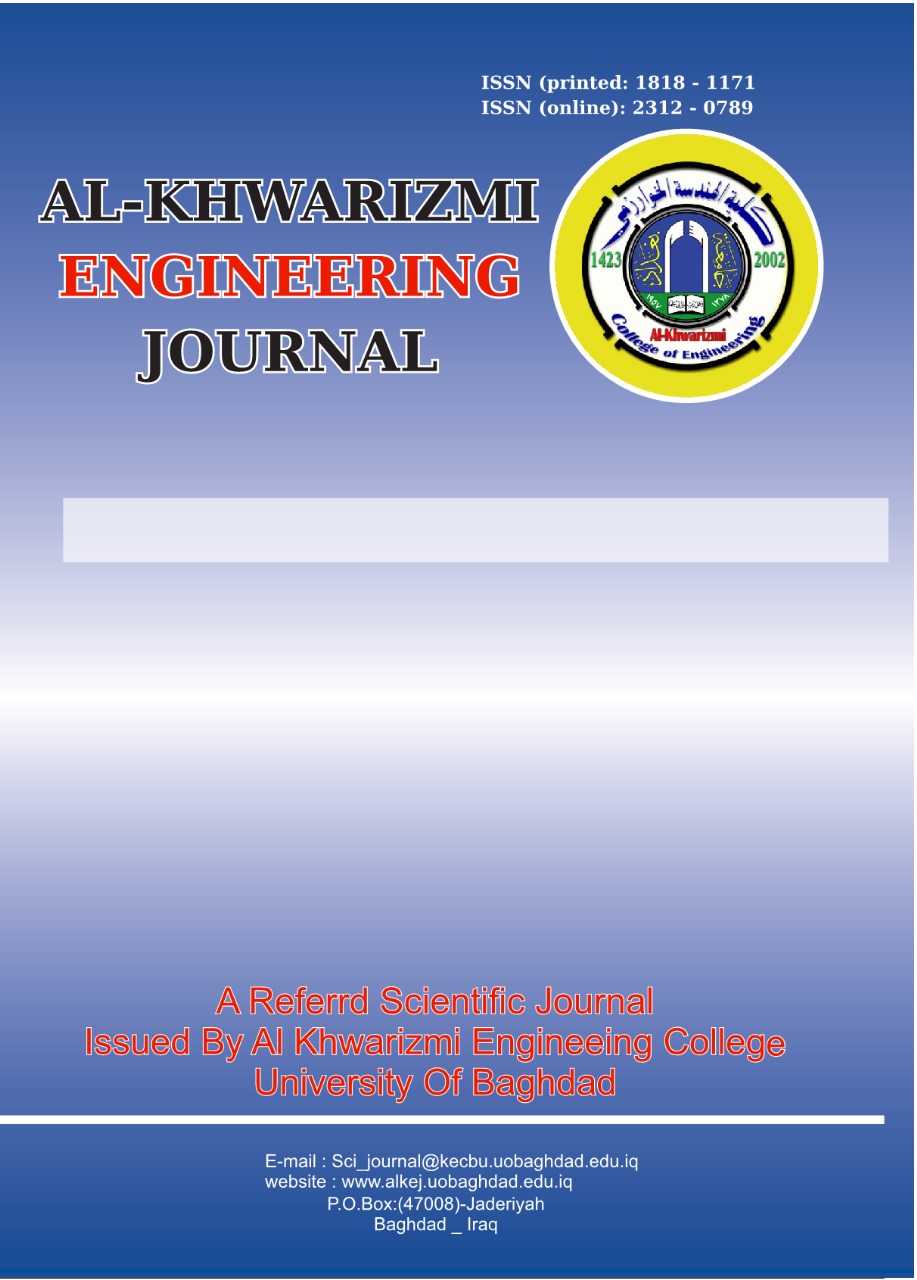Abstract
In this study, copper was removed from an aqueous solution through electromembrane extraction (EME), a new approach that utilises a two-chamber electrochemical cell. It consists of two electrodes (stainless steel cathode and graphite anode) and a solid liquid membrane (SLM). SLM is composed of supporting polypropylene membrane impregnated with1-octanol as an organic solvent and bis(2-ethylhexyl) phosphate (DEHP) as a carrier. The effects of process parameters such as applied voltage, pH and copper concentration on the removal of copper were investigated. Response surface methodology (RSM) was applied to optimise these parameters and their interactions. Results indicated that pH has the major effect on the removal of copper, followed by applied voltage. The squared interaction term in the RSM model has the highest contribution (70.5%), followed by the linear term, thereby confirming the significant interaction among the variables. The optimum conditions include an applied voltage of 60V, pH of 5.18 and initial copper concentration of 5 ppm, which yield to a removal efficiency of 80% after 6 hours of operation. The findings demonstrate the use of electromembrane extraction as an efficient method for the removal of heavy metals and provide valuable insights for future application to other environmental and water treatment processes.
Keywords
1-octanol.
Copper
DEHP
Electromembrane extraction
RSM
SLM
Abstract
في هذه الدراسة، تمت دراسة إزالة النحاس من محلول مائي باستخدام استخلاص الغشاء الكهربائي (EME) كنهج جديد تم فيه استخدام الخلية الكهروكيميائية ذات الغرفتين. تتكون الخلية من قطبين كهربائيين (كاثود الفولاذ المقاوم للصدأ وأنود الجرافيت) فضلاً عن غشاء سائل صلب (SLM). يتكون SLM من غشاء بولي بروبيلين داعم مشرب بـ 1-أوكتانول كمذيب عضوي وفوسفات مكرر (2-إيثيل هكسيل) (DEHP) كحامل. وتمت دراسة تأثير معلمات العملية مثل الجهد المطبق، ودرجة الحموضة، وتركيز النحاس في إزالة النحاس. وتم تطبيق منهجية سطح الاستجابة (RSM) لإيجاد الظروف الأمثل لهذه المعلمات وكذلك التفاعلات فيما بينها. أظهرت النتائج أن الرقم الهيدروجيني له تأثير كبير في إزالة النحاس يليه الجهد المطبق. يمتلك مصطلح التفاعل التربيعي في نموذج RSM أكبر مشاركة بنسبة 70.5٪ يليه المصطلح الخطي الذي يؤكد وجود تفاعل كبير بين المتغيرات. وكانت الظروف الأمثل هي الجهد الكهربي المطبق 60 فولتاً، ودرجة الحموضة 5.18، وتركيز النحاس الأولي 5 جزء في المليون إذ تم تحقيق كفاءة إزالة قدرها 80% خلال 6 ساعات من التشغيل. توضح نتائج هذا العمل نشاط استخراج الغشاء الكهربائي كوسيلة فعالة لإزالة المعادن الثقيلة التي توفر رؤى قيمة للتطبيق المستقبلي لهذه الطريقة في العمليات البيئية ومعالجة المياه الأخرى.
